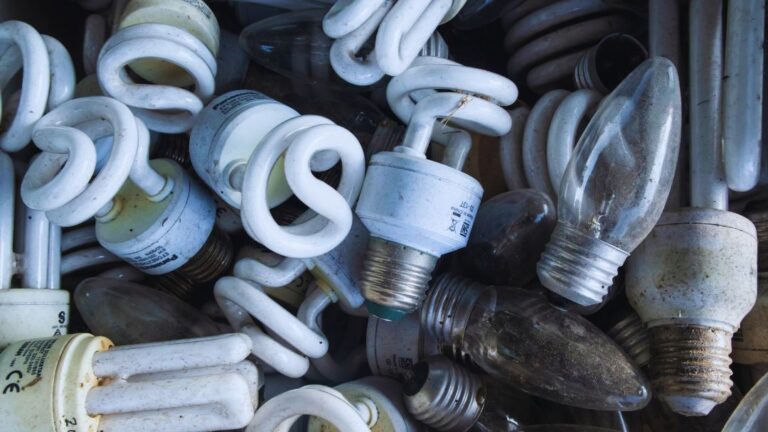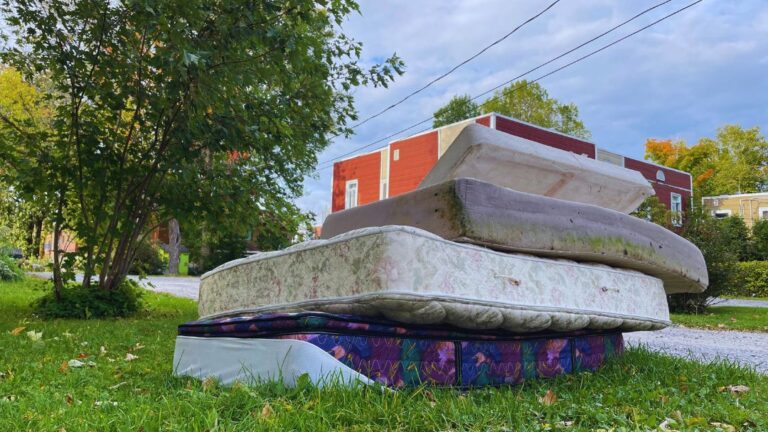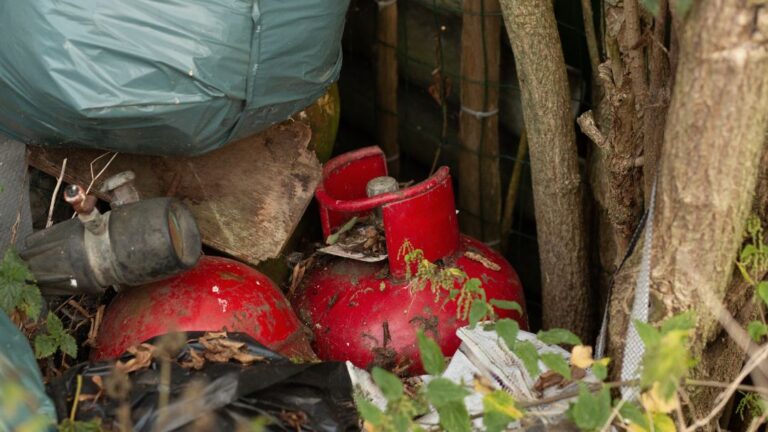This guide shows you how to handle liquid waste removal in manufacturing plants. You’ll learn about different waste types, disposal rules, and safety steps.
What is Liquid Waste Removal
Liquid waste removal means getting rid of liquid leftovers from making products. Factories that make drugs, food, or medical products create lots of liquid waste.
This waste can hurt people and the environment if not handled properly. That’s why there are strict rules about how to deal with it.
| Common Liquid Wastes | Where They Come From |
| Dirty water | Production lines |
| Chemical leftovers | Old reagents |
| Cleaning fluids | Equipment washing |
| Product spills | Batch changes |
How Chicago Cleans 1.4 Billion Gallons of Wastewater Every Day
Types of Liquid Waste in Manufacturing
- Process Water
Process water gets dirty during production. It picks up chemicals and particles from the equipment.
You can’t just dump this water down the drain. Most places need to clean it first or send it to a special treatment plant.
- Chemical Waste
Old chemicals pile up in every factory. Expired reagents can’t be used anymore but they’re still dangerous.
Hazardous waste examples include acids, bases, and solvents. Each type needs special handling.
- Cleaning Solutions
Every piece of equipment needs cleaning between batches. The dirty cleaning solution becomes waste.
Some cleaning chemicals are pretty safe. Others can burn skin or release toxic fumes.
| pH Level | Waste Type | Special Needs |
| 0-2 | Strong acid | Neutralize first |
| 3-6 | Mild acid | Standard disposal |
| 7 | Neutral | Regular drain OK |
| 8-11 | Mild base | Standard disposal |
| 12-14 | Strong base | Neutralize first |
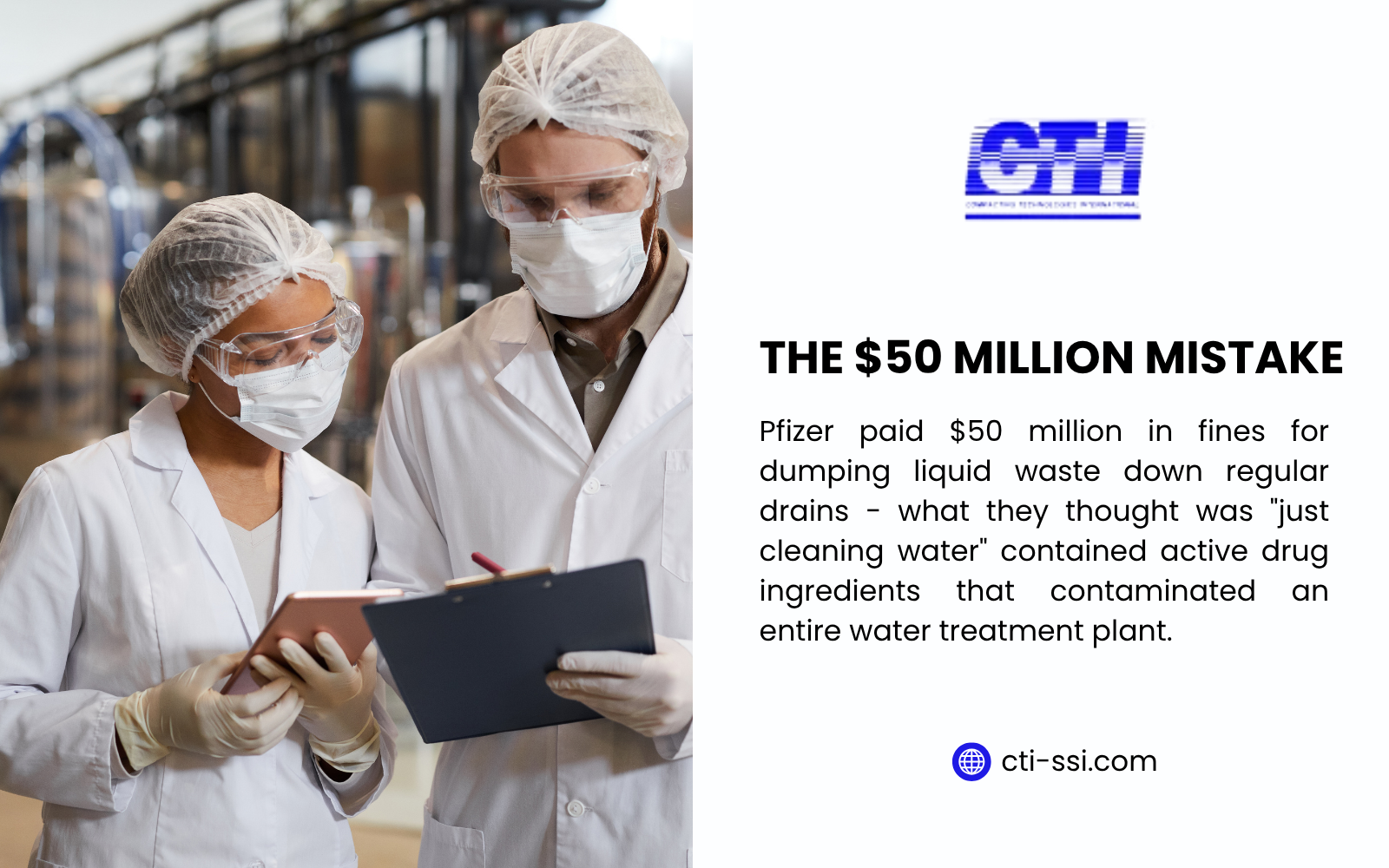
Rules for Liquid Waste Removal
- EPA Rules
The EPA sets the basic rules for waste disposal. Every state has to follow these minimum standards.
If you dump waste wrong, you get big fines. Some companies have paid millions in penalties.
- RCRA Laws
RCRA controls dangerous waste from start to finish. If you make more than 100 kg of hazardous waste per month, you need special permits.
RCRA hazardous waste rules cover everything from storage to final disposal. The paperwork alone can be a full-time job.
- State Rules
Your state might have tougher rules than the EPA. Some states ban certain disposal methods completely.
Check with your state environmental agency. What’s legal in one state might be banned in another.
| Regulation Level | Who Makes Rules | Penalty Range |
| Federal | EPA | $10K – $1M+ per day |
| State | State EPA | $5K – $500K |
| Local | City/County | $1K – $50K |
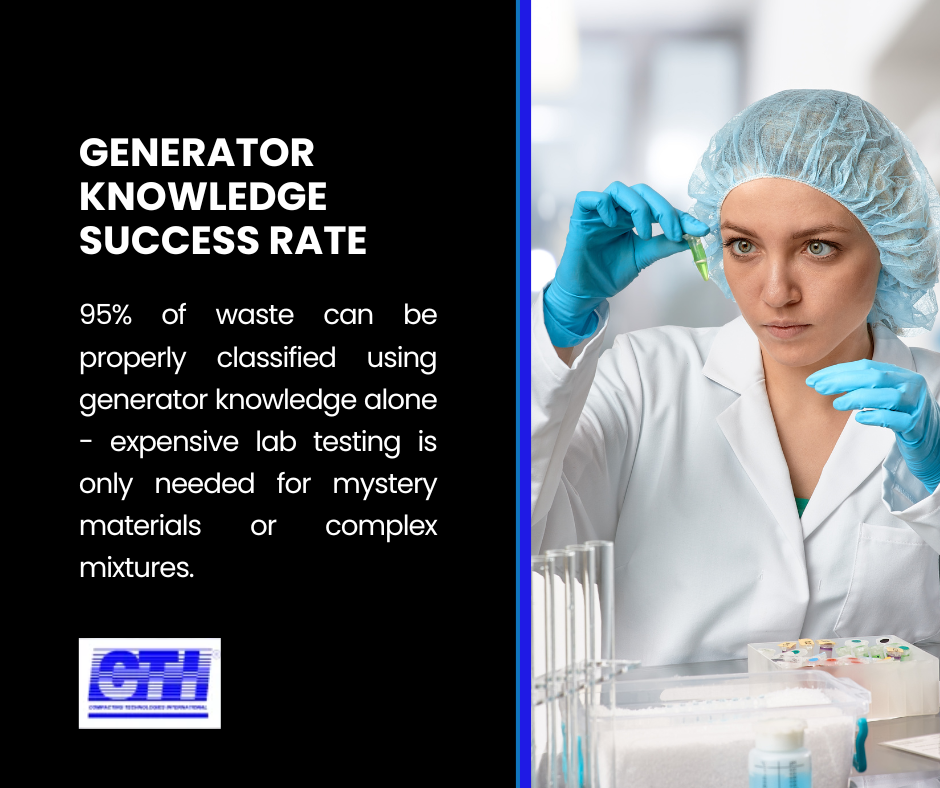
Safety Steps for Liquid Waste
- Protective Gear
Workers need the right gear for each type of waste. Basic gear includes gloves, safety glasses, and protective clothes.
Dangerous chemicals need more protection. Full-face masks and chemical suits might be required.
- Storage Rules
Liquid waste needs proper containers and backup containment. Flammable cabinet requirements apply to materials that can catch fire.
Storage areas need good labels and spill cleanup supplies. Regular flammable cabinet inspections keep everything safe.
- Emergency Plans
Spills happen. When they do, you need a plan ready to go.
Emergency contacts should include your cleanup crew, the EPA, and professional spill services. Fast action saves money and prevents bigger problems.
| Emergency Type | Response Time | Who to Call |
| Small spill | Immediate | Internal team |
| Large spill | Within 1 hour | Professional cleanup |
| Hazardous release | Within 15 minutes | EPA + Fire Dept |
How to Remove Liquid Waste
- On-Site Treatment
Some companies treat their own waste before disposal. This works if you have lots of the same type of waste.
Treatment systems cost a lot upfront but save money over time. You need trained operators and regular maintenance.
- Professional Services
Most companies hire professionals for liquid waste removal. These services have the right equipment and know all the rules.
Professional haulers handle the paperwork and transportation. This cuts down on your legal risks.
- Recycling Options
Some liquid waste can be recycled or reused. Solvent recovery systems clean dirty solvents for reuse.
Waste recycling works best with high-value materials. Not everything is worth recycling though.
| Treatment Method | Best For | Cost Level |
| On-site treatment | High volume, same waste | High upfront, low ongoing |
| Professional disposal | Mixed waste types | Medium per gallon |
| Recycling | Valuable solvents | Low if markets exist |
- Waste Compaction
Smart factories use compactors to crush liquid waste containers before disposal. This cuts disposal costs by reducing the number of drums you need to haul away.
A good compactor can squeeze 4-5 drums worth of waste into one drum. That means 75% fewer trips to the disposal site and way lower hauling fees.
Compaction Method | Volume Reduction | Cost Savings | Best For |
Manual crushing | 30-40% | Low | Small facilities |
Hydraulic compactor | 70-80% | High | Most facilities |
Custom compactor | 80-90% | Very high | Hazardous waste |
Treatment Method | Best For | Cost Level |
On-site treatment | High volume, same waste | High upfront, low ongoing |
Professional disposal | Mixed waste types | Medium per gallon |
Waste compaction | Container volume reduction | Low upfront, big savings |
Recycling | Valuable solvents | Low if markets exist |
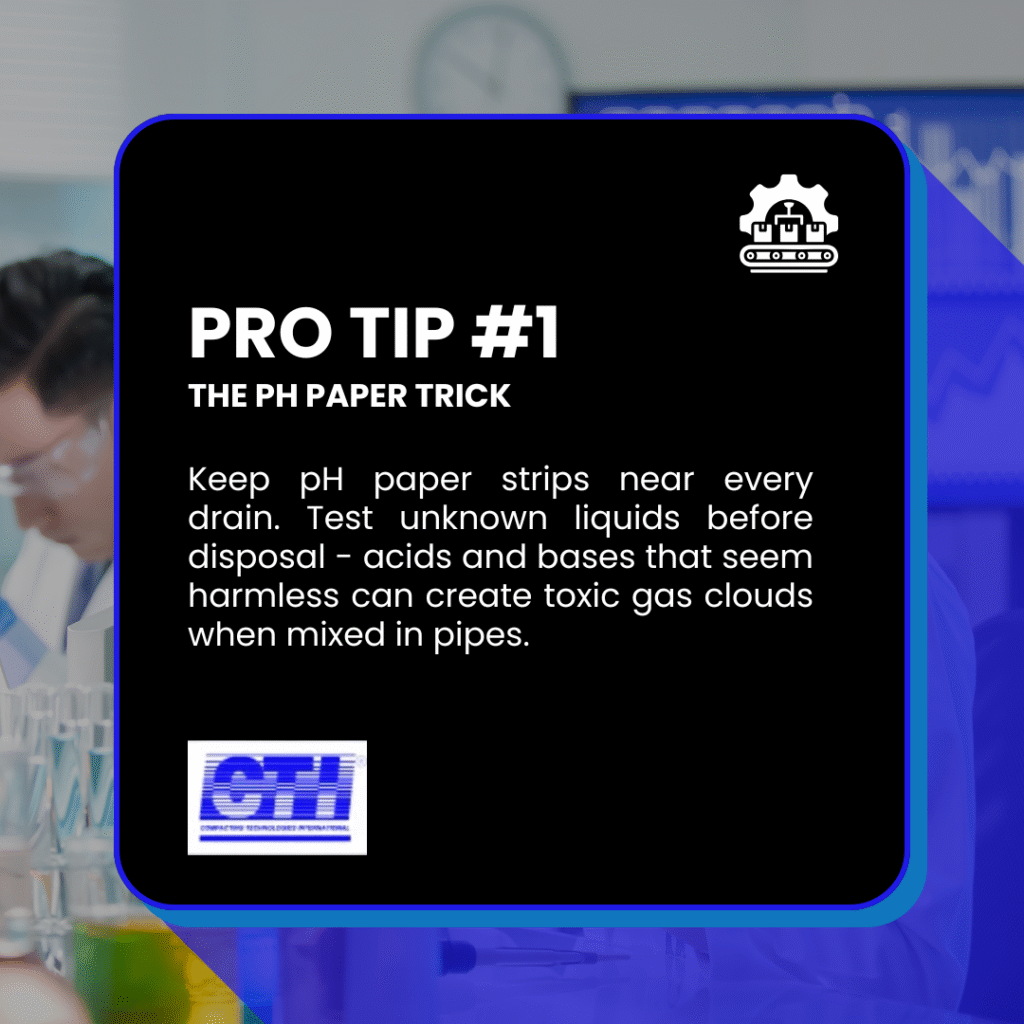
Containers for Liquid Waste
- Standard Drums
Most liquid waste goes in 55-gallon drums. How to dispose of 55-gallon drums depends on what was stored in them.
Drums are easy to handle and transport. OSHA drum storage requirements spell out how to store them safely.
- Large Containers
Big waste generators use totes or IBCs. How many gallons does a tote hold range from 275 to 330 gallons.
Totes save space but need special equipment to move. Not all disposal companies accept them.
- Special Containers
Some chemicals need special containers. Acids eat through regular plastic drums.
The container type affects your disposal options. Standard containers are cheaper to dispose of.
| Container Size | Capacity | Handling | Best Use |
| 5-gallon pail | 5 gallons | Hand carry | Lab waste |
| 55-gallon drum | 55 gallons | Drum dolly | Most waste |
| Tote/IBC | 275-330 gallons | Forklift | High volume |
| Tank truck | 5,000+ gallons | Pump transfer | Very high volume |

Paperwork and Records
- Waste Manifests
Dangerous waste needs a manifest for every shipment. This tracks the waste from your facility to final disposal.
Electronic manifests make the paperwork easier. You still need to keep copies for three years.
- Lab Testing
You need to know what’s in your waste before disposal. Lab tests identify all the chemicals present.
Regular testing works for ongoing waste streams. One-time tests work for well-known materials.
- Record Keeping
Keep records of everything. This includes waste amounts, disposal receipts, and worker training records.
Digital records save space and make searches easier. Always have backups in case of computer problems.
| Record Type | Keep For | Why Important |
| Manifests | 3 years | EPA requirement |
| Lab reports | 5 years | Disposal documentation |
| Training records | 3 years | OSHA compliance |
| Disposal receipts | 10 years | Legal protection |
Cost Factors
- Treatment vs Disposal
On-site treatment costs more upfront but less per gallon over time. Direct disposal costs less upfront but more per gallon.
Calculate the break-even point based on your waste volumes. High-volume generators usually benefit from on-site treatment.
- Reducing Waste Volume
Less waste means lower disposal costs. Process changes, better chemicals, and recycling all help reduce waste.
Regular waste audits find ways to cut waste. Small changes often add up to big savings.
- Choosing Services
Liquid waste removal services vary widely in price and quality. Get quotes from several companies.
Look at licensing, insurance, and disposal methods. The cheapest option isn’t always the best value.
| Cost Factor | Impact on Price | Ways to Reduce |
| Waste volume | High | Process optimization |
| Hazard level | Very high | Material substitution |
| Container type | Medium | Standardize containers |
| Transport distance | Medium | Local disposal sites |
Emergency Liquid Waste Removal
- Spill Cleanup
Spills need fast action to prevent bigger problems. Have cleanup supplies ready and train your team how to use them.
Small spills can usually be handled in-house. Big spills need professional cleanup crews.
- 24/7 Emergency Services
Many waste companies offer round-the-clock emergency liquid waste removal. This helps when spills happen at night or on weekends.
Emergency contracts should spell out response times and costs. Test your emergency contacts regularly.
- Reporting Requirements
Big spills must be reported to the EPA and other agencies. Reporting rules depend on the type and amount of material spilled.
Keep emergency contact numbers posted near phones. Fast reporting can reduce penalties.
| Spill Size | Response Team | Reporting Required |
| Less than 5 gallons | Internal cleanup | Usually no |
| 5-55 gallons | Internal + supervisor | Maybe |
| More than 55 gallons | Professional cleanup | Yes |
| Any hazardous amount | Professional + emergency | Immediate |
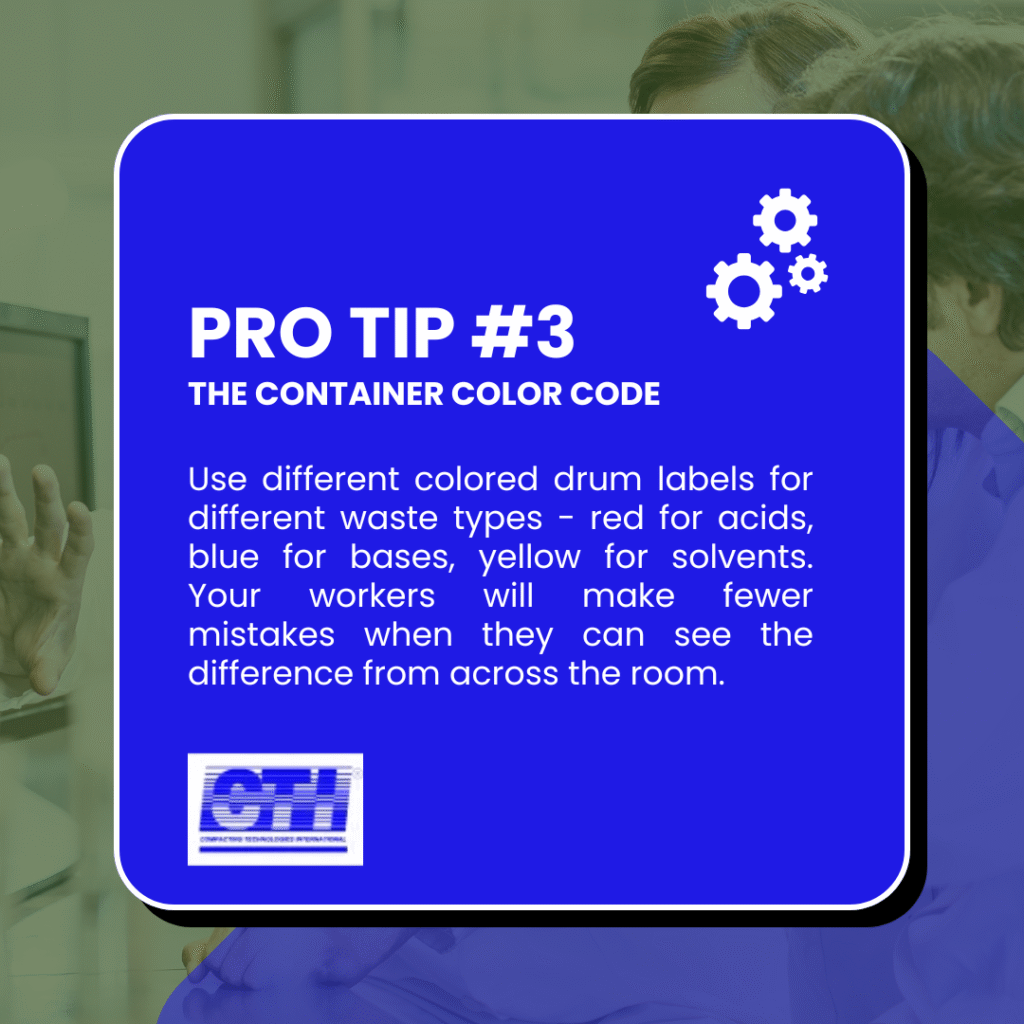
Future Changes
- New Technology
New treatment methods keep getting better and cheaper. Real-time monitoring systems can spot problems before they become spills.
Automated systems reduce human error. They also provide better records for regulatory compliance.
- Changing Rules
Environmental rules keep getting stricter. What’s legal today might be banned tomorrow.
Stay up to date with rule changes. Join industry groups that track regulatory developments.
- Green Focus
Companies want to look good environmentally. Carbon filtration systems and activated carbon filtration help clean wastewater.
Green solutions often cost more upfront but provide marketing benefits. They may also prevent future regulatory problems.
| Technology Trend | Current Status | Expected Impact |
| Real-time monitoring | Early adoption | Fewer spills |
| Automated treatment | Pilot testing | Lower labor costs |
| Advanced filtration | Widely available | Cleaner discharge |
| AI optimization | Research phase | Better efficiency |
Best Practices
- Staff Training
Good training prevents accidents and saves money. Cover hazard identification, proper procedures, and emergency response.
Update training when rules change or new chemicals are introduced. Document all training for regulatory compliance.
- Equipment Maintenance
Regular maintenance prevents equipment failures. Follow manufacturer schedules and keep detailed records.
Preventive maintenance costs less than emergency repairs. It also reduces the risk of spills and accidents.
- Continuous Improvement
Regular audits help find ways to improve. Look at costs, safety, and compliance issues.
Compare your performance to industry standards. Benchmark studies show where you stand relative to competitors.
| Best Practice | Frequency | Key Benefits |
| Staff training | Every 6 months | Fewer accidents |
| Equipment checks | Monthly | Less downtime |
| Waste audits | Yearly | Cost savings |
| Compliance reviews | Twice yearly | Avoid penalties |
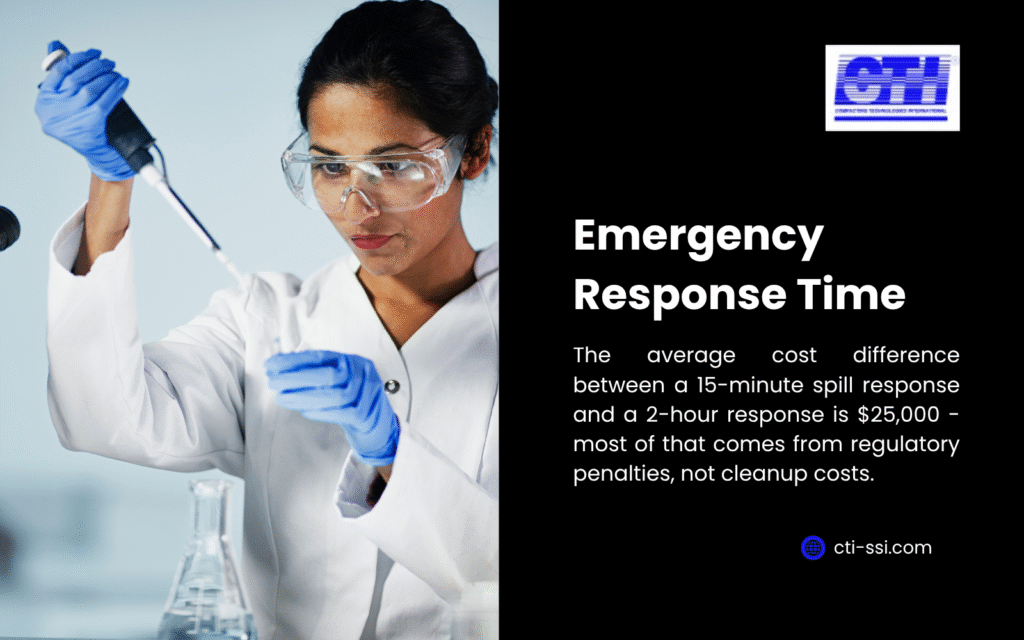
Types of Liquid Waste Services
- Industrial Liquid Waste Disposal
Industrial liquid waste disposal needs special equipment and permits. Different industries create different types of waste.
Drug companies deal with active ingredients that need special destruction. Food companies have organic waste that can often be treated biologically.
- Commercial Liquid Waste Removal
Commercial liquid waste removal serves smaller businesses. These services often handle mixed waste types from multiple customers.
Commercial services cost more per gallon but require less paperwork from customers. This works well for small waste generators.
- Hazardous Liquid Waste Disposal
Hazardous liquid waste disposal follows the strictest rules. These materials can hurt people or the environment if handled wrong.
Chemical waste removal companies specialize in dangerous materials. They have special trucks, treatment facilities, and trained drivers.
The 4 key characteristics of hazardous waste help identify materials that need special handling. Know these characteristics to classify your waste correctly.
| Service Type | Customer Size | Waste Types | Cost Level |
| Industrial | Large facilities | Single waste type | Low per gallon |
| Commercial | Small businesses | Mixed waste | Medium per gallon |
| Hazardous | Any size | Dangerous materials | High per gallon |
| Emergency | Any size | Spills and accidents | Very high per gallon |
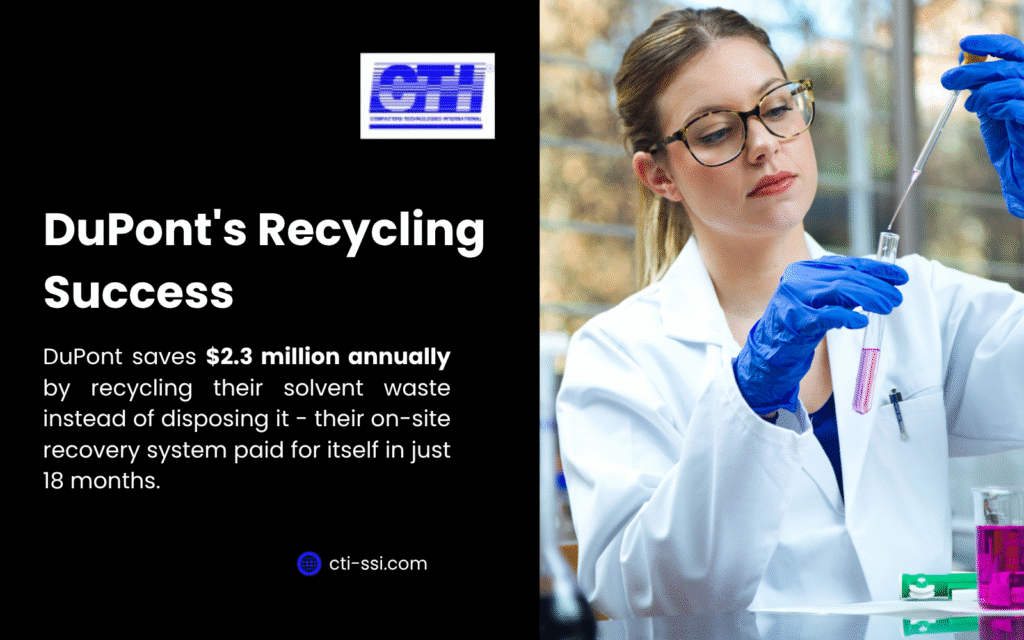
Specialized Services
- Septic Tank Pumping Services
Septic tank pumping services handle waste from on-site treatment systems. Regular pumping prevents system failures and backups.
Most septic systems need pumping every 2-3 years. High-use systems need more frequent service.
- Sludge Removal Services
Sludge removal services handle the thick waste that settles in treatment tanks. This material needs special handling and disposal.
Sludge contains high levels of bacteria and other contaminants. Professional removal protects worker health.
- Emergency Liquid Waste Removal
Emergency liquid waste removal provides a fast response for accidents and spills. These services operate 24/7 with specially equipped trucks.
Emergency response costs more but prevents bigger problems. Fast cleanup reduces environmental damage and regulatory penalties.
| Service Frequency | Typical Cost | When Needed |
| Regular pumping | $200-500 | Every 2-3 years |
| Sludge removal | $500-2000 | When tanks fill up |
| Emergency response | $1000-5000+ | Spills and accidents |
Working with CTI-SSI
CTI-SSI builds tough, reliable compactors that help you save space, stay safe, and cut costs. Whether you’re dealing with hazardous, radioactive, or industrial waste, our machines are built to handle the mess and make your life easier.
Simple to use, fully customizable, and built with safety in mind.
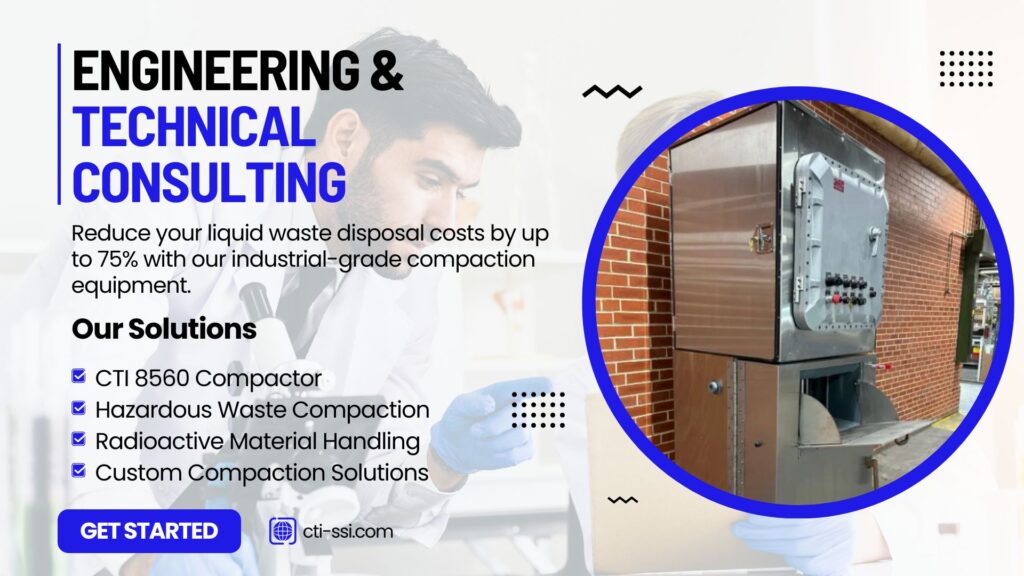
Get Professional Help With Your Liquid Waste Problems
With a CTI compactor, you can cut down on drums, reduce risk, and save serious money. Most of our customers have reduced disposal costs by over 70%. Let professionals handle your waste optimization program. Contact CTI-SSI today and stop worrying about liquid waste removal costs eating into your profits.


